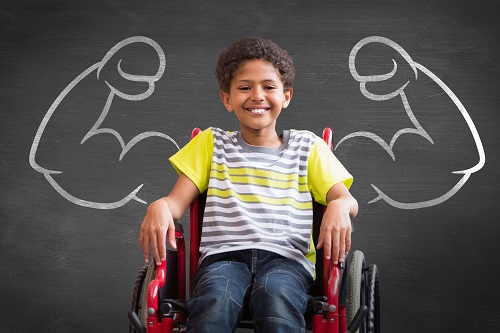Chronic diseases such as diabetes, heart disease, and obesity disproportionately impact people with disabilities. According to the Behavioral Risk Factor Surveillance System (BRFSS, 2020), 30% of adults in Florida have a disability, of which 40% have at least one chronic condition. 18% report diabetes and 41% have high cholesterol. To reduce this burden of disability and improve access to care for people with disabilities, the Disability and Health Program (DHP) works to improve the health of people with mobility limitations and intellectual and developmental disabilities through evidence-based public health interventions.
For more information on the current state of disability in Florida, see the 2021 Florida Disability Data Report.
Florida Disability and Health Program Goals

Since 2018, the Florida Department of Health has focused on a more holistic approach to programs and services. As a result, the DHP continues to work to ensure students with disabilities in mainstream and special education schools have access to adapted physical activity opportunities.
Partner with the University of Florida to increase access to adapted physical activity for students with disabilities in mainstream and special needs schools; Reduce diabetes prevalence among people with disabilities by implementing adapted diabetes prevention programs at program locations across the state; Increase access, availability, and use of health promotion resources, tools, and inclusion strategies for people with disabilities; Improve access to care and treatment for people with disabilities by providing disability competency training to health professionals and providers; Encourage personal preparedness behaviors for people with disabilities, access, and functional needs; Work with partner agencies to improve inclusion of people with disabilities, access, and functional needs in emergency preparedness, response, and recovery activities.
resource

To stay healthy, active, and part of the community, people with disabilities need the same health and wellness programs and services as the general population. Ensuring the health of people with disabilities requires health services that meet their needs as a whole person, not just as a person with a disability.
Tips to improve your overall health
Physical activity recommendations from the Centers for Disease Control and Prevention include:
Children and adolescents aged 6 to 17 years – at least 60 minutes of physical activity each day. Adults aged 18 to 64 years – at least 2 hours and 30 minutes of moderate-intensity physical activity each week and at least 2 days of strength-building activities each week. Older adults aged 65 years and older – same as adults aged 18 to 64 years who have no health limitations.
There are many ways for kids and adults to stay active. Find activities you enjoy and ways to get more active. You might also enjoy…
Walk, row, or run indoors or outdoors each day. Learn a new adaptive physical activity that you enjoy. Participate in fitness activities such as walking or biking with a friend in an accessible park or green space. Keep a log of the physical activity you do each day. Participate in activities offered by your local parks and recreation department.
In addition to being more active:
Record your weight weekly and share it with your healthcare provider. Record what and how much you eat each day. You may learn ways to eat healthier and eliminate unhealthy choices.
Fact Sheet: Physical Activity and Fitness, Healthy Eating and Tips for Maintaining a Healthy Weight | (Spanish version)
*Note: This page contains materials in Portable Document Format (PDF). You may need the free Adobe Reader to view these files.
This publication was supported by grant or cooperative agreement number NU27DD000012 from the U.S. Centers for Disease Control and Prevention. Its content is solely the responsibility of the authors and does not necessarily represent the official views of the Centers for Disease Control and Prevention or the U.S. Department of Health and Human Services.

